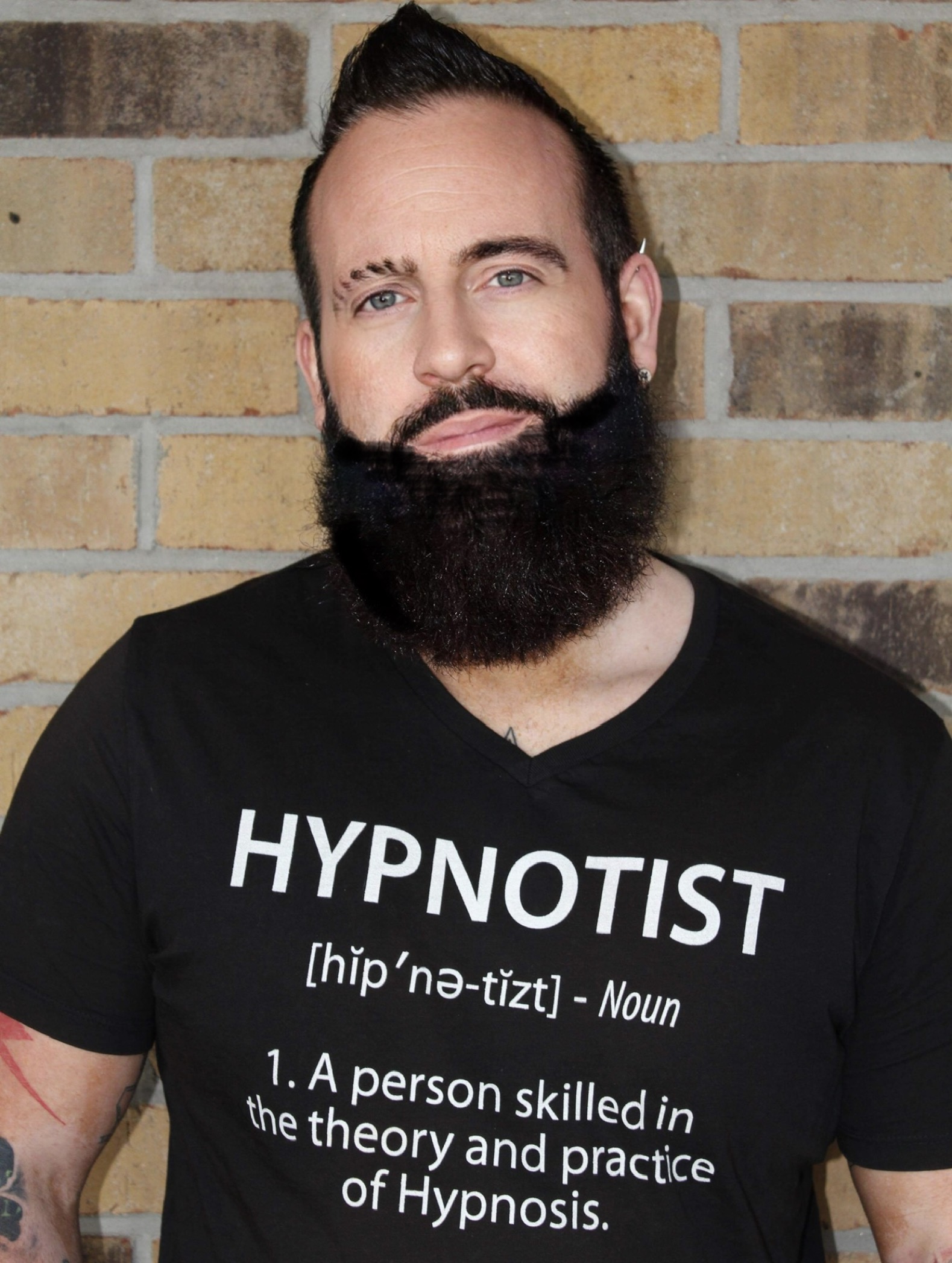
Now, that doesn’t mean that on the 10th thousand recall of that memory, the elements are not still the same or very, very similar to what actually happened. Principal characters may be there, country of origin, a similar scenario, but every time we access it, we’re changing it in some form of fashion. To use a neuro-linguistic programming frame, the map is not the territory, so we can’t always trust our memories. Now, some of the information used to retrieve memories for forensic hypnosis could be the movie, fear to technique, the calendar technique, ideomotor, finger signals, blackboard techniques, automatic writing, and artists composite sketch, traditional regression.
And all these techniques are indeed designed to regress the person back in time for the purpose of mentally reviewing the circumstances while experiencing a feeling of detachment. These techniques are used to separate the event and the mental review process by time as well documented that tensions, anxieties, and traumas have a negative effect on recall and interrupt memories. There’s also been, in my experience, however, to counter that is sometimes by eliciting the emotion. It may be framed as negative is sometimes the easiest way to access that memory because all memories on some level are state dependent. However, there is a great quote that says, “A true wise person is someone that can have the memory, but all the emotion has been removed,” which would always be the case in forensic hypnosis.
Therapeutic, it would be a little bit different, as just mentioned. It is important that the hypnotist use neutral non leading questions allowing the person to report in free narrative recall and use compound or zero in in questions for specific details. An example of this would be if the witness victim tells the hypnotist that the suspect has a mustache while mentally recalling the characteristics of the perpetrators face. The hypnotist may then ask the witness to describe the mustache, and then if it is thin, medium, or thick. Now, part of the memory retrieval process is getting the client or victim to use…the legal term is to get them to mentally review the sequences of events without verbalizing the information to the hypnotist.
The witness, victim, should be told to let the hypnotist know that the mental review process is completed with a finger signal. Then it is the hypnotist job to ask the witness victim to translate their visual, auditory, or kinesthetic, olfactory, and gustatory memories into words as they mentally review the sequences of events for the second time. The hypnotist will then ask zero in in questions, neutral, as mentioned before, non-leading questions, and compound types of questions to clarify the information provided, starting with the general and then get into the more specific. The first documented attempted use of hypnosis in the criminal justice system dates back to the mid-1800s and the second documented effort was in 1894.
In corn out, the Superior Court of San Diego County, May 1959, the attorney for the defendant charged with murder petitioned the court to require the court and Sheriff to allow his client to be examined by a hypnotist in preparing his defense. On September 8th, 19 80, Carl Weathers Texas Department of Public Safety services conducted a forensic hypnosis interview with Jerry Magoyne Jr. for the purpose of refreshing his memory in an effort to develop a composite sketch of the suspect in the unsolved Vizard murder, which occurred on July 23rd, 1967. The forensic hypnosis interview was 13 years after the murder. A forensic artist offered to set present during the hypnosis session drew a composite sketch of the man behind the counter described by Magoyne Jr. who also picked Robert Zani out of a photo lineup shown to him by Austin police detective, Paul Ruiz, after the hypnosis was concluded.
Jerry Magoyne Jr. and his father had purchased some food items in the Austin Town and Country convenience store on the morning of Sunday July 23rd, 1967, and observed the man behind the counter who waited on them. Shortly after the crime, Magoyne Jr. and Sr. was interviewed by the Austin Police Department, the ADP, related to the murder investigation. Magoyne Jr. and Sr. had visited this particular convenience store each morning for several days to purchase food items to take to the construction job site where they were working. They advised the APD investigator that on the Sunday morning in question, the person who had waited on them at the town and country convenience store had not been the same person who had waited on them the previous days. They provided a vague description of the person who waited on them the day of the murder.
September 25th, 1980, Robert Zani was indicted of the murder of George Vizard on July 23rd, 1967. Zani had previously been arrested on March 28th, 1990, after using stolen credit cards to rent a motel room in Austin, Texas. Zani was being held in the Travis County Jail on credit card charges. A subsequent investigation by the Austin Police Department resulted in the recovery of a Ruger.357 Magnum Black Hawk revolver identified by the Bureau of Alcohol, Tobacco, and Firearms trace as having been purchased by Zani at Oshman’s Sporting store in Austin, Texas, July 22nd, 1966, one year prior to the murder of George Vizard.
And the revolver was a right eight, consistent with the murder weapon. Moreover, Zani’s fingerprints were identified on the counter of the Austin Town and Country convenience store the morning of the Vizard murder. A former employee of the convenience store, Zani knew how to operate the cash register and the combination to the floor safe concealed under a rubber mat behind the store counter. Defense attorney Robert Greenwood, who considered himself somewhat of an expert on hypnosis, and Patrick Gain, served as the defense counsel for Zani during his trial in Travis County, Texas. Robert Garver, a San Antonio psychologist was used by Greenwood as a rebuttal witness to the attack and the credibility of the police officers you using hypnotists. On March 18th, 1981, Robert Zani, was convicted of by a jury of the murder of George Vizard and subsequently sentenced to imprisonment of 99 years in the Texas Department of Correctness…or Corrections.
His conviction was appealed by Zani through the Texas judicial system and ultimately affirmed by the Texas Court of Criminal Appeals. Were it not for the tenacity and commitment with the Austin Police Department detective, Paul Ruiz and Martin Martinez, and the Travis County assistant district attorney, Joseph Mad Dog Turner, the case against Robert Zani may not have resulted in a conviction for the murder of George Vizard. Now, as you can see, there are many, many other cases that, again, you can research on Mark Howell’s website of just some of the cases where hypnosis has been used to convict somebody of a crime or at least retrieve some of the information that resulted in a conviction.
Now, hypnotically refreshed recall, standing alone without corroboration is insufficient for an arrest or indictment. When using hypnosis to refresh memory, you may get correct information, incorrect information, or a combination of both. For that reason, corroboration is needed to support the reliability of the information obtained through hypnosis. Retrieving incorrect information from the witness or victim is not a hypnosis issue because police officers using standard interview techniques get incorrect information from witnesses who may be confused with no hypnosis involved.
There are basically four reasons where the use of hypnosis with a witness, a victim, has been thrown out of court. They are, one, the person, police officers, or mental health individual was incompetent in the proper procedures of forensic applications of hypnosis. Two, the use of hypnosis in a case where it was not warranted based on the circumstances. Three, the blatant use of unacceptable questioning techniques, i.e. leading questions. Four, the prosecutors didn’t put a rebuttal witness on the defense expert. In America now, in all 50 States under the correct circumstances, hypnosis is admittable in court.
Now, I don’t know where you are listening to this podcast from, and you may need to check your country, your city, your province, if you’re in Canada to check the legal ramification of using forensic hypnosis in court. But the fact of the matter is, it still remains a very, very useful and proven way, perhaps almost more than anything else, to retrieve information that has helped people and caused the bad guys to be sentenced and serve time. So I hope you’ve enjoyed the information I’ve put forward on forensic hypnosis today. And as always, don’t take my word for it, do your research. Make your own mind up about it, but not just based on theory, use this. Use it in your life, even more importantly, if you are a hypnotist and you are working with people with memory retrieval. It is imperative that you teach people as I hopefully have here today that your memory is not always fact.
In fact, hardly ever is in fact. Elements will of course be the same but the map is not the territory to quote the neuro linguistic NLP pre-frame. And I’ve put together a special fact sheet which is entitled “The Top Five Ways to Retrieve Information.” If you would like a copy of that fact sheet, then fire me over an email at mail@lukegnosis.com. Mail, M-A-I-L@lukenosis, L-U-K-E-N-O-S-I-S.com and let me know that you would like a copy of the top five ways to retrieve memories.
Always Believe,
Luke Michael Howard CHT
Toronto and Ottawa Clinical Hypnotist





